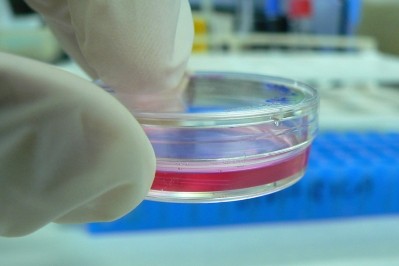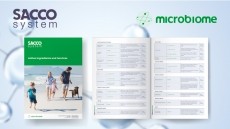US Gov: Critical need for reproducible regenerative med manufacturing processes

Between 2012 and 2014, the US Federal Government spent $2.9bn (€2.6bn) in developing techniques and technologies for the production of cell and gene therapies, according to a White House report on the state of US manufacturing published this week.
But while there has been a steady increase in funding to demonstrate the possibility of such biological products, there remains “a critical and growing need to focus on process engineering to achieve manufacturing reproducibility to increase the reach of the emerging therapeutics,” the report from the Subcommittee for Advanced Manufacturing of the National Science and Technology Council said.
Among the problems cited is the underdevelopment of appropriate growth media for cells, limiting the necessary scale to assure consistency of product:
“Current systems are too inefficient for suspension-grown cells, largely non-existent for adherent cells, and patient-specific for engineered tissue. Research on efficient, safe production of cells and engineered tissues at commercial scale is required to ensure that these precision therapies will be economically and technically achievable.”
The report acknowledges that making cell and tissue products is more challenging than manufacturing biologics due to the largely undefined manufacturing release criteria, the complexity of the product, and the very short shelf-lives of such products, but says the sector should still take lessons from the “traditional” biopharmaceutical industry in terms of how to control its manufacturing products and processes.
“For example, regenerative medicine and pharmaceuticals share some conceptual challenges including bioreactor control, continuous manufacturing, scale-up of cell culture, distributed manufacturing of small personalized batch therapies, starting materials, and the use of disposables in manufacturing.”
It also suggests investing in continuous manufacturing could aid cell and gene therapy production, as well as bioproduction as a whole.
“Although each cell and tissue product is fundamentally unique, their bespoke manufacturing processes may follow a common process governance structure where manufacturing activity is quantified, standardized, and monitored.”
Future investment
The Federal Government, therefore, is set to support the future of regenerative medicine through the development of generalizable approaches to common manufacturing design, development, scale-up, and scale-out challenges.
“This may make the technology attractive enough for the pharmaceutical industry to adopt and use to develop a new class of therapeutics.”
Some of the Government’s current investments in biomanufacturing for regenerative medicine are displayed below:
Lead(s) | Title | Scope |
NSF CBET | Early Concept Grants for Exploratory Research | NSF’s Chemical, Bioengineering, Environmental and Transport Systems (CBET) division uses these exploratory research grants for Cellular Biomanufacturing to investigate key challenges in scale-up, such as efficiency of manufacture, reproducibility, and viability. (TRL 1-3/MRL 1-3) [A] |
DOC NIST | Advanced Manufacturing Technology | The Cell Manufacturing Consortium is currently funded to establish and strength industry-focused research consortia in order to identify future research directions and needs and create a roadmap for cell-based manufacturing which integrates research with the development of commercially viable manufacturing processes. (TRL 1-5/MRL 1-5) [B] |
DOC NIST | Measurements and Standards for Regenerative Medicine | NIST is developing fundamental measurement technologies (such as new image analysis technologies for cell characterization), collaborating with industry on immediate measurement needs (such as cell counting and viability), and developing international standards with industry and FDA that are necessary to enable the development of and the quality assurance of regenerative medicine products. (TRL 1-5/MRL 1-5) [C] |
HHS FDA | Mesenchymal Stem Cell Consortium | The Mesenchymal Stem Cell Consortium aims to develop strategies to facilitate the development and translation of stem cell-based regenerative medicine products. Because commonly used measures of cell identity and biological activity are often not well-correlated with and predictive of intended clinical outcomes, the consortium uses Mesenchymal Stem Cells as a prototype cell to identify more predictive measures to characterize cellular therapies. Such analytical techniques provide a potential approach to address variability issues presented by cell source and/or manufacturing conditions. (TRL 2-4/MRL 2-4) [D] |
DoD (Army-led, Navy, Air Force), VA, NIH, and DHA | AFIRM | The Armed Forces Institute of Regenerative Medicine (AFIRM) seeks to develop advanced restorative, diagnostic, and cell and tissue-based treatment options for our severely wounded service men and women. (TRL 2-7/MRL 1-6) [E] |
DoD DARPA, HHS NIH, and FDA | Various Microphysiological Systems programs | These programs are taking diverse approaches to develop microphysiological (“organ-on-a-chip”) systems and determine the feasibility of an in vitro platform that uses human tissues to evaluate efficacy, safety, and toxicity of promising therapies. DARPA (TRL 2/MRL 2), HHS NIH and FDA (TRL 4/MRL 3) [F] |
HHS NIH NHLBI | Stem Cell-Derived Blood Products for Therapeutic Use Program | This program aims to address the scientific questions that remain despite considerable progress towards enabling and accelerating the use of stem cell-derived blood products as therapeutics. It also supports small business research to develop improved techniques and tools to enhance the production of clinically-relevant, functional stem cell-derived red blood cells or platelets in a more efficient and cost-effective manner. (TRL 4/MRL 3) [G] |
HHS NIH NHLBI | Production Assistance for Cellular Therapies III | This is the continuation of a program to advance cellular therapy research in the areas of regeneration of damaged/diseased tissues, organs, biologic systems, and targeted treatments for serious diseases without effective therapies. This program provides qualified investigators with consulting, manufacturing, preclinical study, and regulatory expertise necessary for the development of novel cellular therapies in the area of heart, lung, and blood cellular therapy. (TRL 5/MRL 5) [H] |













